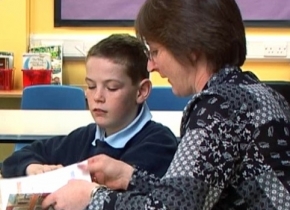
Request a full Catch Up® information brochure and details of our free information webinars
Find out more
Everybody knows about the slippage in progress of learning between Primary and Secondary schools. Indeed, it is estimated that nearly 40% of children go backwards in reading between the end of Year 6 and the beginning of Year 7. Some people have even suggested that pupils might as well skip Year 7 because, for many of them, it takes a year to achieve in Secondary school what they were achieving in the run-up to the SATs in Year 6!
And, if that’s the situation for ‘average’ learners, what’s it like for pupils who struggle with literacy and numeracy?
Every year, about one in three children (about 180,000) leaves Primary school without having mastered essential skills in reading, writing and arithmetic. They are not ‘Secondary-ready’. And more than 30,000 of those 180,000 left Primary school with a Reading Age of 7 years or below. (They are not Junior School-ready – never mind Secondary-ready!) The truth is that pupils who were behind at the previous Key Stage are less likely to make progress than those who had achieved the expected level or above. In fact, less than half the pupils who reached the previous minimum standard at Key Stage 2 (i.e. Level 4c) went on to achieve 5 good GCSEs, including English and mathematics. And the 2014 curriculum has brought a new minimum standard, so the bar has definitely been raised.
Why are struggling learners more vulnerable at transfer?
Catch Up® is the working name of The Caxton Trust, a not-for-profit charity registered in England and Wales (1072425) and Scotland (SC047557) as well as a company limited by guarantee (03476510). Catch Up is a registered trademark.
The Catch Up® Web site use "cookies" to help you personalise your online experience. A cookie is a text file that is placed on your hard disk by a Web page server. Cookies cannot be used to run programs or deliver viruses to your computer. Cookies are uniquely assigned to you, and can only be read by a web server in the domain that issued the cookie to you.
Click on the different category headings below to find out more. You can change your default settings very easily. To turn cookies on, click the button to the right. To turn cookies off, click the buttons to the left. Please read our cookie policy to find out more.
Performance monitoring cookies: Google Analytics cookies (_ga,_gid) - these can last up to 2 years.
Strictly necessary cookies used by the site content management system: PHPSESSID (used to record your logged in session) and allow_cookies (used to record that the user has consented to cookies) - these are either temporary (session) cookies or expire after no more than 30 minutes and are used to provide functionality as you navigate around the site and allow you to access secure areas.